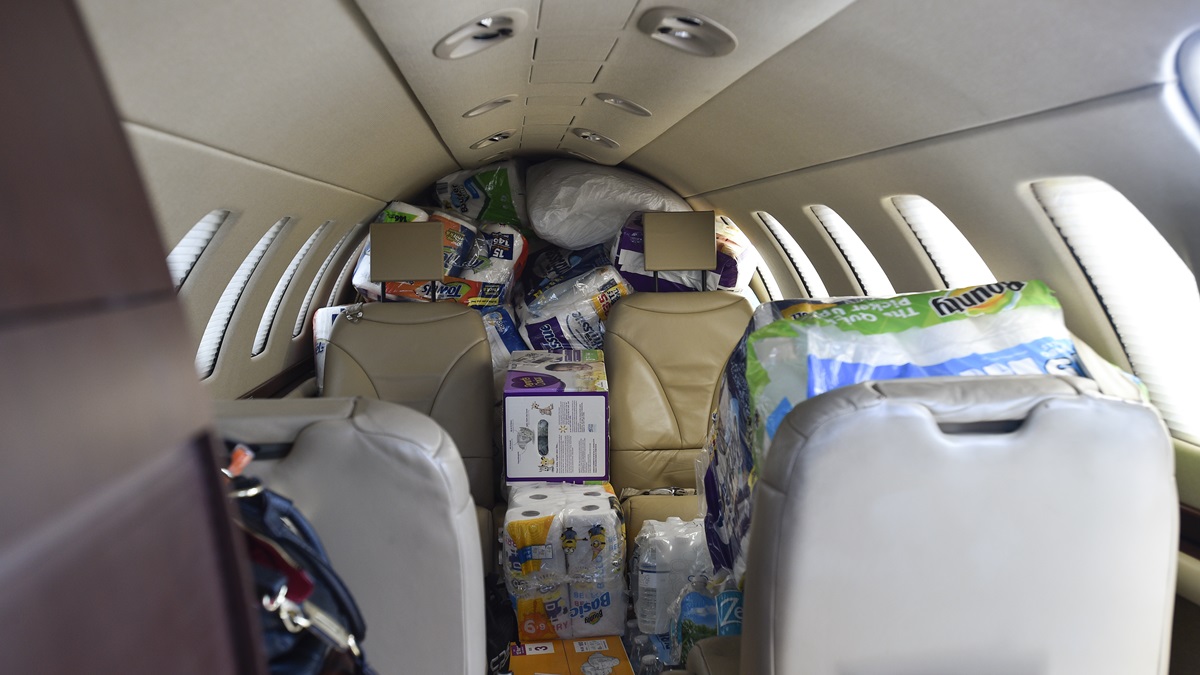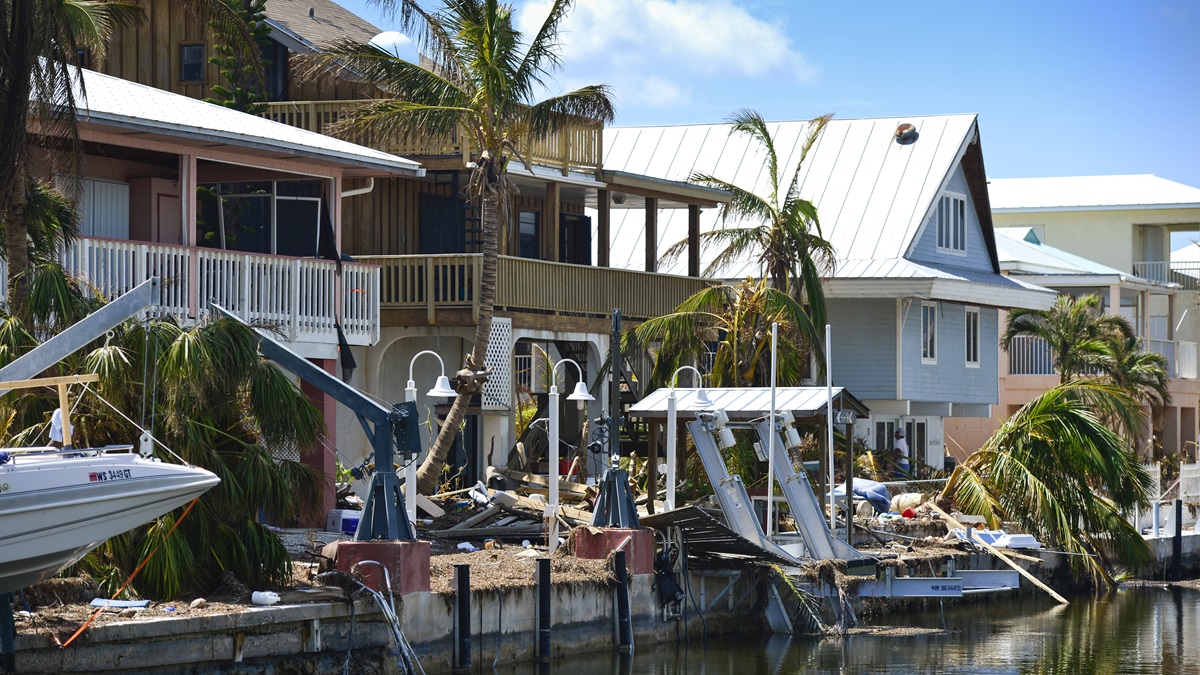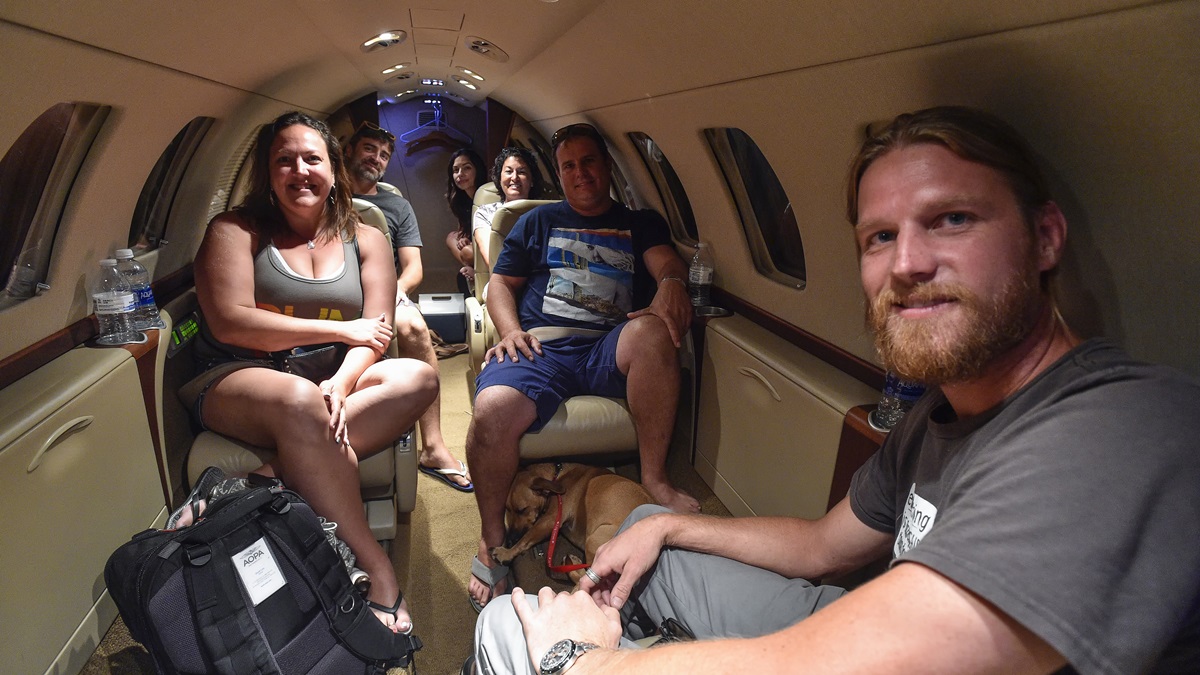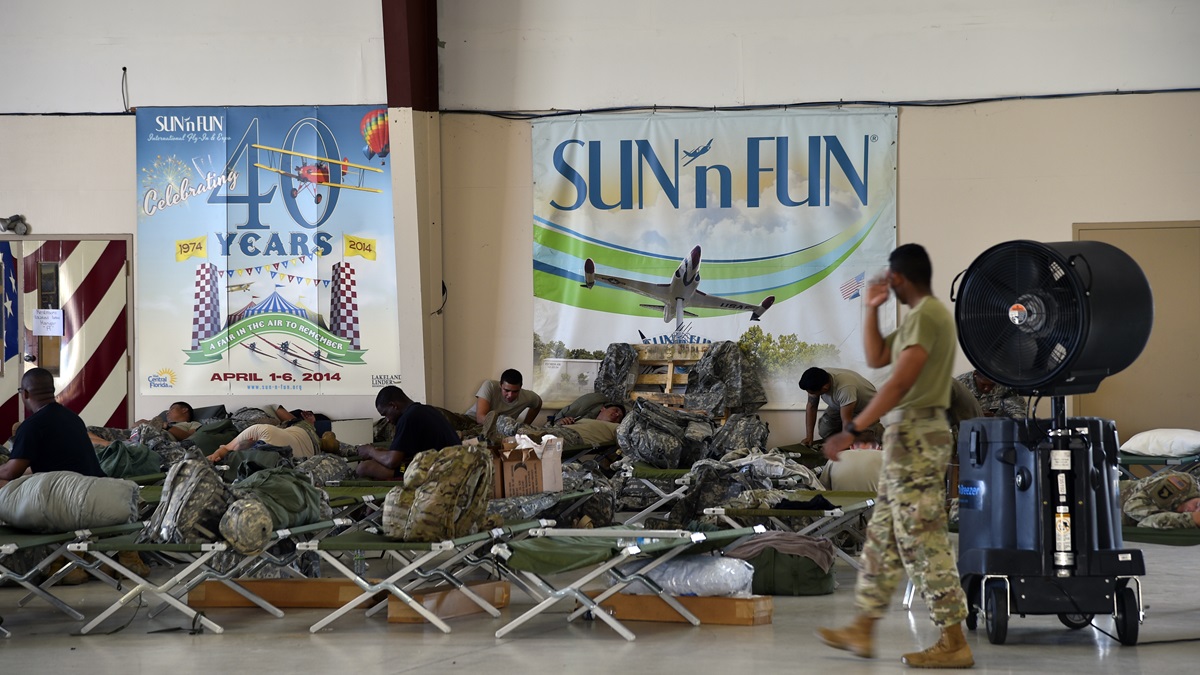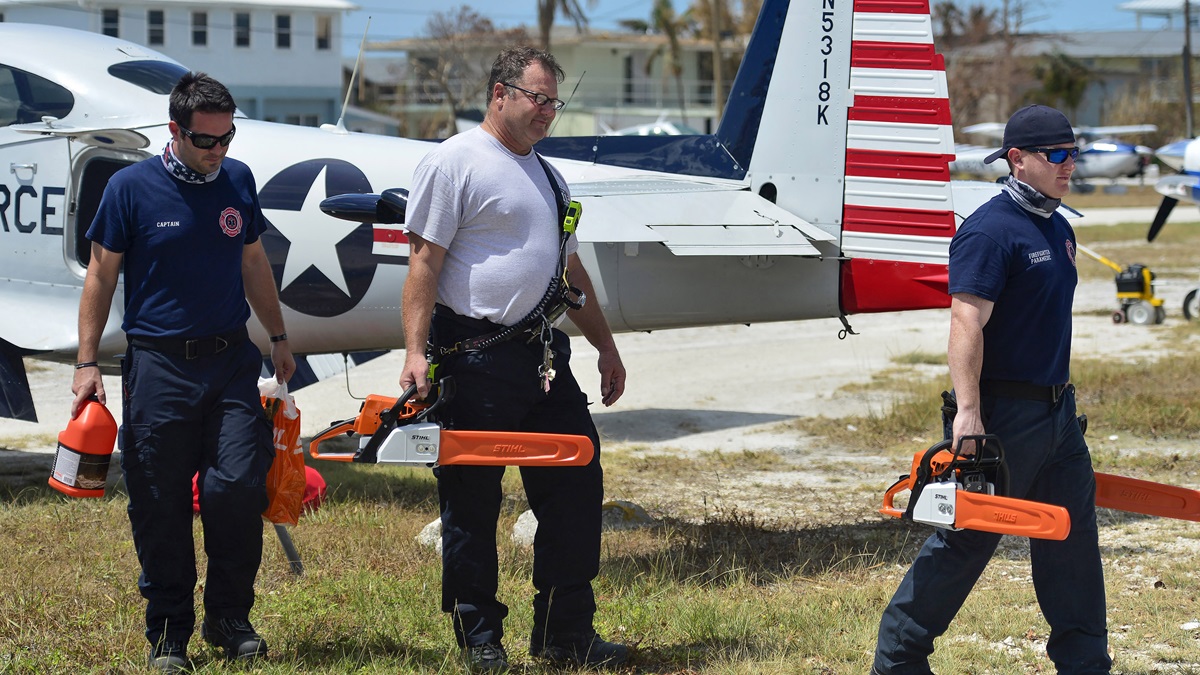Sending out a lifeline
GA pilots join in hurricane-relief efforts
Hurricane Irma, with winds that reached speeds of 185 mph for a record 37 hours, struck the U.S. Virgin Islands as a Category Five storm in September and tore a path of destruction through the Caribbean Islands and Florida. Residents and visitors in St. John, the smallest of the three U.S. Virgin Islands, waded through waist-deep sludge and debris as they started cleanup efforts, and U.S. Virgin Islands Gov. Kenneth Mapp predicted rebuilding would be “a long haul.”
Nearly a week after the hurricane made landfall in the Florida Keys as a Category Four storm, chaos prevailed over most of the island chain connected to the U.S. mainland by a narrow roadway, a handful of general aviation airports, and little else.
With roads blocked and islands hard hit, GA aircraft could reach those most in need. AERObridge, the nonprofit, all-volunteer organization that acts as a GA clearinghouse in times of emergency needs, joined other relief groups in a bucket brigade of aircraft leapfrogging supplies from Florida’s mainland
farther south into the Keys and beyond. Lakeland Linder Regional Airport, Miami Homestead General Aviation Airport, and Ocala International-Jim Taylor Field Airport became hubs for the GA volunteer relief effort. AOPA pitched in with donated supplies, and staff members brought airplanes to Florida, and, along with almost a dozen other pilots, supported AERObridge’s missions beginning just two days after the hurricane struck.
Little airport, big difference
Hurricane Irma roared ashore in Florida on September 10, just south of tiny Summerland Key Cove Airport in the Florida Keys. The narrow strip is four feet msl and tucked between rows of pastel houses. After the storm unleashed its fury on the necklace of Florida Keys islands, the situation at this idyllic aviation community was anything but typical.
“We heard you had chain saws,” said Delray Beach Fire-Rescue Capt. Joey Cafone as he greeted AOPA Air Safety Institute Executive Director Richard McSpadden next to a Navion stuffed with the saws and other essentials. The relief supplies arrived at the 2,550-foot-long by 20-foot-wide strip of asphalt on a compassion flight from Lakeland Linder Regional Airport, organized by AERObridge. Power, water, and communication services to the Keys were still cut off; evacuated residents seeking a look at their property weren’t officially allowed in; and a dusk-to-dawn curfew was in effect.
Cafone said first responders would use the chain saws to cut through downed power poles and other debris to look for unaccounted-for residents and to make way for personnel to restore services and infrastructure.
A Beechcraft Bonanza owner’s home was stripped of its roof, shutters, and landscaping; a Cessna 182’s tail was crushed against a hangar-home; and an automobile lay submerged on its back in a nearby waterway. The stench of rotting food and bait from upturned refrigerators and freezers filled the air. Residents who couldn’t—or didn’t—evacuate were stranded without food, water, or shelter.
“These people need food and water—now,” emphasized Drew Norman, a volunteer who previously helped with Hurricane Harvey relief efforts in Houston (see “Helping after Harvey,” page 85).
Mooney Acclaim pilot, Florida Keys resident, and broadband service provider Jordan Smith loaded his single-engine aircraft with sleeping bags, cleanup supplies, and baby necessities at the Lakeland emergency distribution center and flew them to Marathon—which, according to local pilots, was barely operational. He then drove a truck with two fellow technicians to Summerland to restore Wi-Fi service to the airport’s supply center. “I’m doing this because I don’t have a home to go to, and it’ll be a month before I have power,” said Smith.
Robert “Bob” Raskey, a United Airlines captain who acts as the carrier’s employee relief director, was at Summerland Key shortly after he confirmed that several thousand United employees living in South Florida were safe.
“We’ve always been Monroe County’s secondary operations location,” explained Raskey, an avid GA pilot and aircraft owner who helped coordinate the delivery of emergency supplies. “It’s interesting that a little GA airport in the middle of nowhere turned into an epicenter for search and rescue and critical humanitarian supplies,” he added. “It goes to show the world how a little airport can make a huge difference.”
He said the Summerland Key airport served as a search-and-rescue center as first responders fanned out north toward Big Pine Key to look for a missing 31-year-old woman. He assisted special operations teams, which used night vision gear to locate the woman unharmed. “But we’re still in a state of emergency,” he noted.
All of Thursday, September 14, and Friday, September 15, under the hot Florida sun, heavily laden aircraft disgorged their supplies at the tiny strip. One by one, pilots took off from Runway 12 headed north with passengers in a relief effort that was reminiscent of a coordinated military operation.
“This is awesome,” said Monroe County, Florida, Sheriff’s Deputy Ken Fricke, a Big Pine Key resident supervising the process from the makeshift supply depot. He was also a victim of the storm when Hurricane Irma struck. “My roof lifted off, but I’ll be all right,” he said. “When we saw our house we said, ‘Oh, my God,’ and then we looked around at what others lost and said to each other, ‘Hey, we’re not so bad off’ compared to neighbors and relatives who lost it all.”
‘What it’s all about’
Beginning on Tuesday and through the week, the Sheltair fixed-base operations ramp at Ocala International-Jim Taylor Field Airport was a beehive of activity as volunteer pilots loaded their aircraft with supplies. “I saw a call go out on the BeechTalk forum and threw my hat in the ring, so to speak,” said Cessna 414 owner Chandler White, a Hickory, North Carolina, resident who participated in several shuttles between the three airfields in his burgundy-and-white twin laden with food, drinking water, and cleaning supplies.
Pilatus PC–12 owner Alan Keenan surveyed his silver-and-blue aircraft as it took on cases of bottled water. He said the single-engine turboprop was perfect for the mission because it could handle a heavy payload. “It’ll hold about 1,600 pounds of cargo and two passengers, and is kind of like a flying [Chevrolet] Suburban,” said the Sikeston, Missouri-based pilot.
AOPA staff pilots Luz Beattie and Janet Davidson were enlisted to deliver life-saving antibiotics to the U.S. Virgin Islands. Donated cases of azithromycin, insulin, and other pharmaceuticals—along with cleaning supplies, necessities for infants, food, and drinking water—were belted into passenger seats, stuffed into cargo holds, and maneuvered into the nooks and crannies of AOPA’s Cessna Citation CJ3 bound for Saint Croix.
“We can’t do this without you guys,” said Steve Ewing of Crossroads Alliance & Ministries in Ocala, as a cooler of insulin and two dozen cases of medication arrived by pickup truck. “This is about $300,000 of medicine,” he noted as volunteers from Meadowbrook Church slung the boxes down a line of human hands and into the waiting jet aircraft.
After landing at St. Croix, tThe CJ taxied to the Bohlke International Airways FBO at Henry E. Rohlsen Airport where a knot of damp and weary travelers who were stranded after attending a friend’s wedding at St. John—about 40 miles north of St. Croix—sat slumped in overstuffed chairs. The group of three women and three men (plus two dogs) were dressed in T-shirts and shorts, and had little else. They all wore expressions of misery—even the pets.
While the CJ was fueled for the return flight, the flip-flop-clad evacuees worked with U.S. military personnel to quickly unload medicine and relief supplies in dwindling daylight before they jumped aboard the aircraft bound for the U.S. mainland.
“After Irma we left our suitcases, our extra clothes, and our emergency supplies with the locals,” explained Mike Keaton. “They needed it more than we did.”
Keaton described a scene of devastation that had unfolded as the friends huddled in a hillside cottage. Exploding power transformers arced through the sky and turned the air green and acrid with smoke. Deafening wind tore at everything in its path. “It was raining so hard I started worrying we’d be caught in a landslide,” he said. “Every few minutes I looked outside to see if the other hillside was still there. Then the concrete walls started weeping water into the room, and before you knew it, there were several inches of water on the floor.”
When the storm moved on, “Rooftops were laying in the middle of the road,” said Keaton. “My buddies used hand tools to cut through power poles blocking our paths” to the bay. “Fish Bay and Coral Bay got hit the worst. It’s not something I want to relive again,” he said.
He said that for the most part, the community of locals and visitors banded together immediately after the powerful storm stomped through. Looting began a couple of days later because food and water were scarce and there was little security. The friends attempted to book flights home, to no avail, and heard reports of ferry boats bound for Puerto Rico that were turned away for unknown reasons.
Chris Norton cradled his dogs Chupa and Loca that were nervously curled at his feet during the three-hour flight to Lakeland. Norton said he enjoyed his job of 20 years at a picturesque St. John hotel before Irma. “There’s no hotel there anymore, so I’m not sure what I’ll do now,” he said.
An emotional Norton hugged Beattie after he exited the aircraft and thanked fellow pilot Davidson and AOPA. “What you’ve done today by dropping off supplies for those people, and then helping us, that’s amazing…” he trailed off, biting his lip as Norton’s brother patted his back.
“I’m glad we were able to help,” responded Beattie. “That’s what it’s all about.”
Email [email protected]



